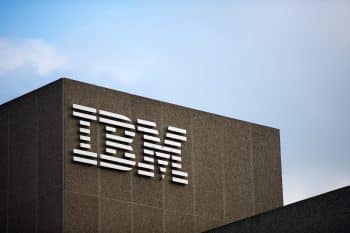Home » Business News » Fed signals bond-buying taper may start soon
Fed signals bond-buying taper may start soon
https://www.whatjobs.com/news/business-news/fed-signals-bond-buying-taper-may-start-soon

By Nagasunder in Business News, posted September 24, 2021
As the U.S. central bank's shift away from economic crisis measures gets traction, the Federal Reserve indicated on Wednesday that it would likely begin cutting its monthly bond purchases as soon as November and that interest rate hikes may come sooner than planned.
The slight hawkish tilt was signaled in a new policy statement and economic projections that showed nine of the Fed's 18 officials are prepared to raise interest rates next year in response to inflation that the central bank now expects to hit 4.2 percent this year, more than double its target rate of 2 percent.
Fed Chair Jerome Powell said in a news conference following the central bank's latest two-day meeting that a reduction of the central bank's $120 billion in monthly bond purchases could begin after the Nov. 2-3 policy meeting as long as US employment growth through September is "fairly strong." The September nonfarm payrolls report will be released in early October, and it will be the last such report until the Fed meets again in November.
"It wouldn't take a knockout or super-strong employment report" to start the "taper" of the bond-buying program, with the process expected to wind down by the middle of next year, Powell said.
That schedule has taken on far more importance. The Federal Reserve aims to stop buying Treasury jobs and mortgage-backed securities before raising borrowing prices, and new predictions imply that this will happen in 2022.
The Fed now expects inflation to exceed its target for four years in a row. Even though the overshoot is slight, at 2.2 percent in 2022 and 2023 and 2.1 percent in 2024, it has begun to sway policymakers who have been split on whether the most significant risk is the pandemic's ongoing economic impact, which is marked by relatively high unemployment, or the threat of breakout inflation.
For the time being, the Fed believes it will boost employment while keeping inflation under control, which it sees as the product of "transitory" causes that will eventually go away. Indeed, interest rate hikes are likely to be gradual, with the Fed's benchmark overnight lending rate rising to 1% in 2023 and then to 1.8 percent in 2024 - still regarded as a loose monetary policy stance that will allow the unemployment rate to decline to approximately 3.5 percent, as it was pre-pandemic.
On the other hand, policymakers have lowered their estimates for economic growth this year, with GDP expected to expand 5.9% this year, down from 7.0 percent in June, owing to a new wave of coronavirus cases.
Overall, the Fed's statement and projections are "probably a little bit more hawkish than many would have anticipated, basically acknowledging that should the economy continue to grow as we have seen, it would warrant a tapering to occur," said Sam Stovall, chief investment strategist for CFRA Research in New York. "You could say it's a tentative tapering announcement even though they did lower their 2021 GDP forecast."
Powell told reporters that financial conditions would remain accommodating even after the Fed stopped buying assets and that the bond-buying decision was separate from any interest rate decisions.
The Federal Reserve kept its current target interest rate in a range of 0% to 0.25 percent on Wednesday. Following the announcement of the statement, U.S. markets extended their gains before retracing later in the afternoon, with the S& P 500 index finishing up around 1%. Treasury yields swung back and forth, with the benchmark 10-year note yielding less.
The Fed's September policy statement was primarily expected to signal the conclusion of the bond purchases it has been conducting to mitigate the pandemic's economic impact. Last December, Fed officials stated that they would keep buying bonds at the present rate until the central bank made "substantial further progress" toward its goals of maximum employment and inflation.
Powell said the inflation benchmark was cleared on Wednesday, and the employment standard "all but met." But it was in their broader economic outlook that Fed policymakers made a less anticipated change.
Inflation expectations for 2021 increased by 0.8 percentage points, while the predicted end-of-year unemployment rate increased from policymakers' prior prediction in June. As a result, two members pushed out their estimated timing for slightly raising the Fed's benchmark overnight interest rate from its present level to 2022, bringing the median projection for next year to 0.3 percent.
The move to lower GDP growth expectations for 2021 reflected concerns that the coronavirus weighs on the economy. Projected growth for next year was increased from 3.3% to 3.8%, with spending merely shifted into future months when the virus is expected to recede. "The sectors most adversely affected by the pandemic have improved in recent months, but the rise in COVID-19 cases has slowed their recovery," the Fed said in its policy statement.
Source: Reuters.com










